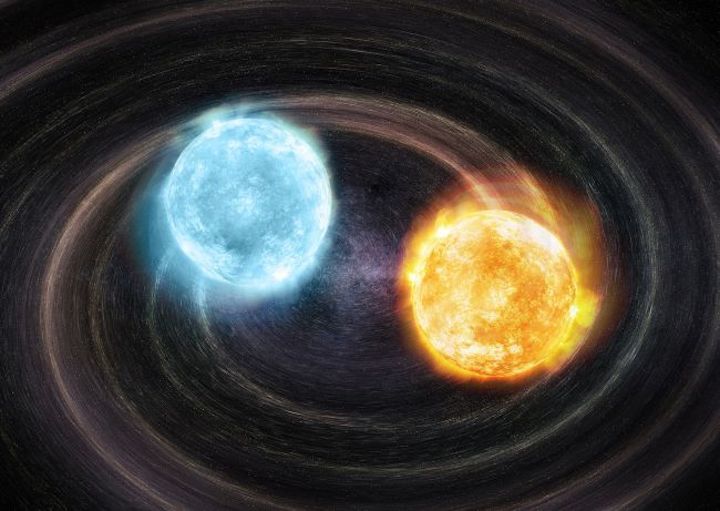6.04.2020

Astronomers have detected two stellar corpses whirling around each other, and they might be producing gravitational waves.
White dwarf stars are what become of stars like our sun after they run out of fuel and turn into leftover hot cores. For many years, researchers have predicted that there should be binary, or two-object, systems made up of white dwarf stars. According to general relativity, two such masses orbiting each other should emit energy in the form of gravitational waves, which are ripples or disturbances in the fabric of spacetime.
Now, this is not the discovery of gravitational waves, rather it is the discovery of this binary which may be a source for gravitational waves. But, not only will this study advance our understanding of these systems and gravitational wave sources, it will also be important in validating the efficiency of an instrument that will launch in 2034.
The instrument, LISA (the Laser Interferometer Space Antenna) gravitational wave observatory, will use the J2322+0509 system to essentially train with. Because they already know they exist, it's a good test to make sure the instrument can correctly spot it.
"Verification binaries are important because we know that LISA will see them within a few weeks of turning on the telescopes," Mukuemin Kilic, a co-author on this study from the University of Oklahoma, said in the statement. "There's only a handful of LISA sources that we know of today. The discovery of the first prototype of a new class of verification binary puts us well ahead of where anyone could have anticipated."
In a new study identifying and exploring this binary, researchers at the Center for Astrophysics (CfA) at Harvard have detected, for the first time, a binary white dwarf system made up of two white dwarf stars (with helium cores) that are clearly separate stars. This system, known as J2322+0509, has a short orbital period of 1,201 seconds (just over 20 minutes) and is the first gravitational wave source of its kind ever identified.
"Theories predict that there are many double helium-core white dwarf binaries out there," Warren Brown, CfA astronomer and lead author on the study, said in a statement. "This detection provides an anchor for those models, and for doing future experiments so that we can find more of these stars and determine their true numbers."
This system, whose orbital period is the third shortest period of all detached binaries ever found, was fairly tough to spot. "This binary had no light curve," Brown said in the statement. "We couldn't detect a photometric signal because there isn't one." So instead of using a photometric study, which looks at light itself, the team used spectroscopic studies, which observe how matter interacts with electromagnetic radiation like visible light, to identify the star's orbital motion.
But, while the system was tricky to spot, it turns out that this type of binary is an extremely strong source of gravitational waves, the team found using theoretical calculations, according to the statement and the study. The researchers determined that because of the system's alignment with respect to Earth, instruments should pick up a signal 2.5 times stronger than from the same system twisted a different direction.
This binary won't be a binary forever, though, as a consequence of the very gravitational waves the scientists hope to someday detect. "The orbit of this pair of objects is decaying," Brown said. "The gravitational waves that are being emitted are causing the pair to lose energy; in six or seven million years they will merge into a single, more massive white dwarf."
This work is described in a paper posted to the preprint server arXiv.org on April 3 that has been accepted by the journal Astrophysical Journal Letters.
Quelle: SC

